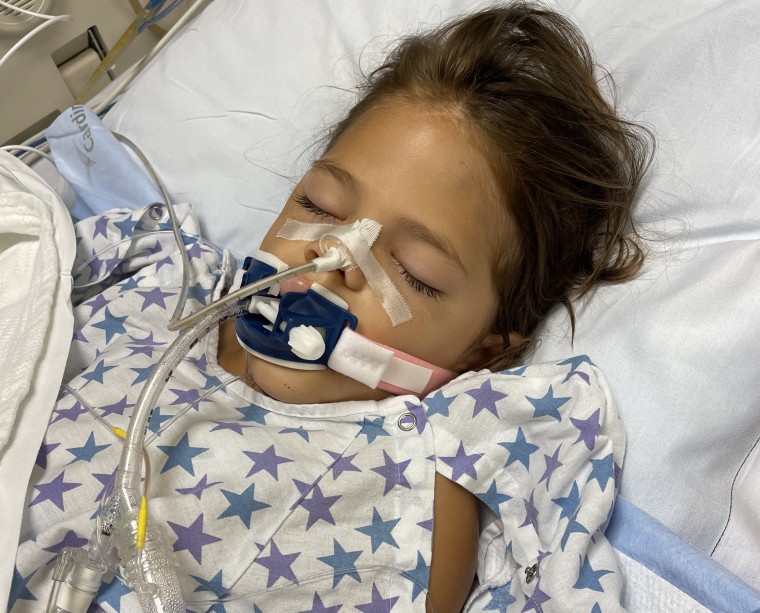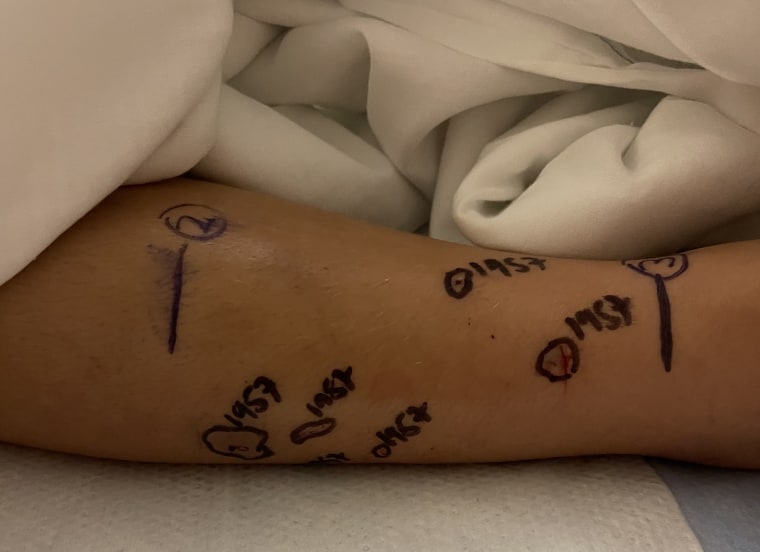A Georgia mom is warning other parents of the importance of educating kids about wild snakes after her 5-year-old daughter was bitten by a timber rattlesnake and ended up in a pediatric intensive care unit.
Maisy Lamica, who recently completed kindergarten, was playing with her cat in her father's back yard when she noticed the cat had the rattlesnake cornered. When Maisy approached, the snake bit her three times on the leg.

Maisy's father called an ambulance, and on the way to the hospital the child went into anaphylactic shock due to either an allergy to rattlesnake venom or the high dose of venom the bites left in her system.
When Maisy arrived at her local hospital, she was life-flighted to Shands Children's Hospital in Gainesville, Florida, where she is being treated in the pediatric intensive care unit.
The accident occurred on Friday, June 18, and throughout the weekend Maisy received 41 vials of anti-venom and was treated with antibiotics, steroids and fluids.
Today, she's turning a corner.
"She's a lot better," Cyndi Spell told TODAY Parents. "The doctors are blown away at how she has pulled through. Her leg finally quit swelling...there was a moment we were unsure if orthopedic doctors would need to cut it open to relieve the swelling."
While there's no estimate of when Maisy will be able to return home to Valdosta, Georgia, Spell says the almost-first-grader is eager to get back to normal.

"Aside from her puffy leg, the bite marks that are still prominent and five days in pediatric intensive care, she's her same silly smiling self," said Spell.
Spell is sharing her story to remind parents of the importance of educating kids about how to handle encountering a snake in the wild.
"I don't know if it would have changed much, but I look back and wonder instead of telling my child, 'Beware of snakes, snakes are scary and snakes are dangerous,' maybe informing her more of what to do when she actually came across one might have helped some," said Spell.

Zach Marchetti is curator of animals at Brevard Zoo in Melbourne, Florida, and says while it's normal for any wild animal to defend itself when threatened, parents can help kids make a plan for what to do if they find themselves up close and personal with a snake in the wild.
"Most importantly, teach them to stay calm, move slowly and find an adult," said Marchetti. "Even if you don't care for snakes, this is so important: Make your children want to tell you and show you from a distance because if they are busy telling you about the snake, they aren't trying to catch it or pick it up."
From there, Marchetti says the most basic instruction for what a child or adult should do when they encounter a snake is simple.
"Stop," he said. "Whatever you are doing, stop and assess the situation. If the snake is moving away let it do so. If the snake is still, slowly and calmly back away so you don't frighten it. If you give a snake six to ten feet of personal space, which should sound like a familiar concept after the past year, then you shouldn't have any problems."
If you or your child does end up in close proximity to a snake, Marchetti says to move slowly and make sure the snake has an escape route.
"A cornered snake is a defensive snake and is much more likely to strike," he said.
Marchetti adds it's important not to teach kids to harm or kill snakes, even if you're afraid of them yourself.
"Instead, when we see a snake, we need to engage our children and teach them how to observe the snake from a safe distance," said Marchetti. "Have them watch how it moves, let them take a picture with your phone and provoke curiosity while instilling respectful, safe behavior. But most importantly, teach them to stay calm, move slowly and find you."
Spell says while she doubts her daughter's accident could have been avoided, she will make sure her children know how to deal with run ins with snakes in the future.
"My kids will know snakes are not some imaginary boogie man," she said. "They are real, they are powerful and they can kill you. We know this firsthand because we almost lost Maisy."
For now, the Georgia mom is thankful to see her daughter begin to recover.
"She'll have one heck of a story to tell one day," said Spell. "Most don't live to talk about one snake bite, much less three."
